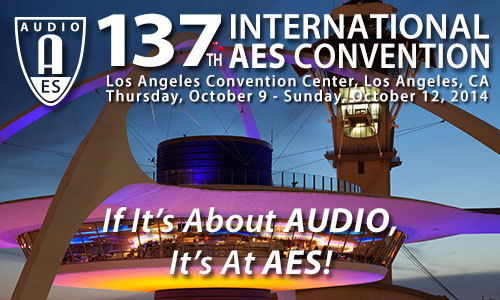AES Los Angeles 2014
Tutorial T18
Saturday, October 11, 2:00 pm — 4:00 pm (Room 406 AB)
T18 - Acoustical Output-Based Evaluation of Sound System Equipment
Presenter:Wolfgang Klippel, Klippel GmbH - Dresden, Germany
Abstract:
This tutorial session will cover best practices for loudspeaker measurements. It is critical for product development and component selection to know the response of loudspeaker systems and components with reasonable accuracy in order to make informed decisions based on comparisons of data. In this session we will briefly cover the basics of FFT-based measurement systems before moving on to additional topics.
• Averaging and S/N Windowing (both signal acquisition and impulse response windowing)
• Ground plane measurement techniques
• Directivity measurements
• Maximum input voltage measurements
• Impedance
• Alignment of pass bands
Traditional loudspeaker measurements as described in the IEC standard 60268-5 require access to the loudspeaker terminals and use the voltage and electrical input power for assessing the sensitivity, power handling, frequency response and other meaningful characteristics. These standards cannot be applied to active sound systems where signal processing, amplification and passive transducers are combined to one physical unit and the audio signal is supplied by wave-file, wireless transmission or in any other digital format.
This tutorial gives a review on the current standard activities in AES, IEC and other committees to develop output-based evaluation techniques applicable to all kinds of loudspeakers and sound reproduction systems. The maximum sound pressure level SPLmax as rated by the manufacturer is not only a meaningful characteristic for the end user but also the basis for calibrating the stimulus provided by any input channel. Sinusoidal chirp signals, multi-tone, burst and other modern test signal require standardization to ensure comparability of the measurement data. Acoustic simulation of loudspeaker-room interaction, the progress in 3D sound reproduction systems and growing importance of personal audio requires comprehensive data describing the near and far field of the source. There is also a need to develop standardized measurement techniques for detecting impulsive distortion generated by voice coil rubbing, loose particles, air leakage and other loudspeaker defects which have a high impact on sound quality.

